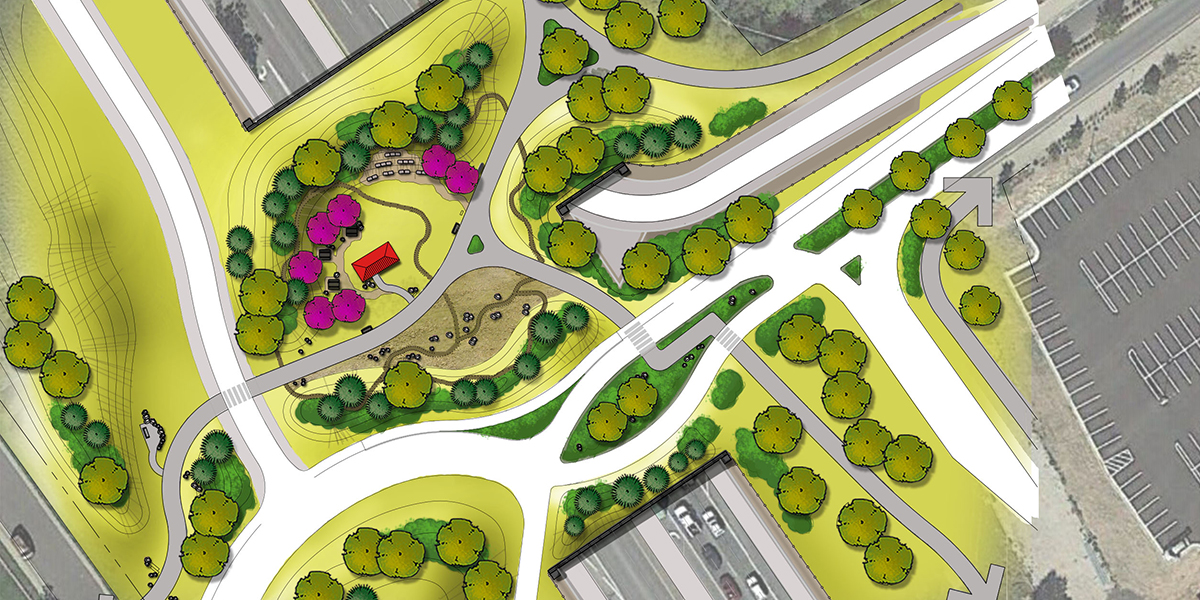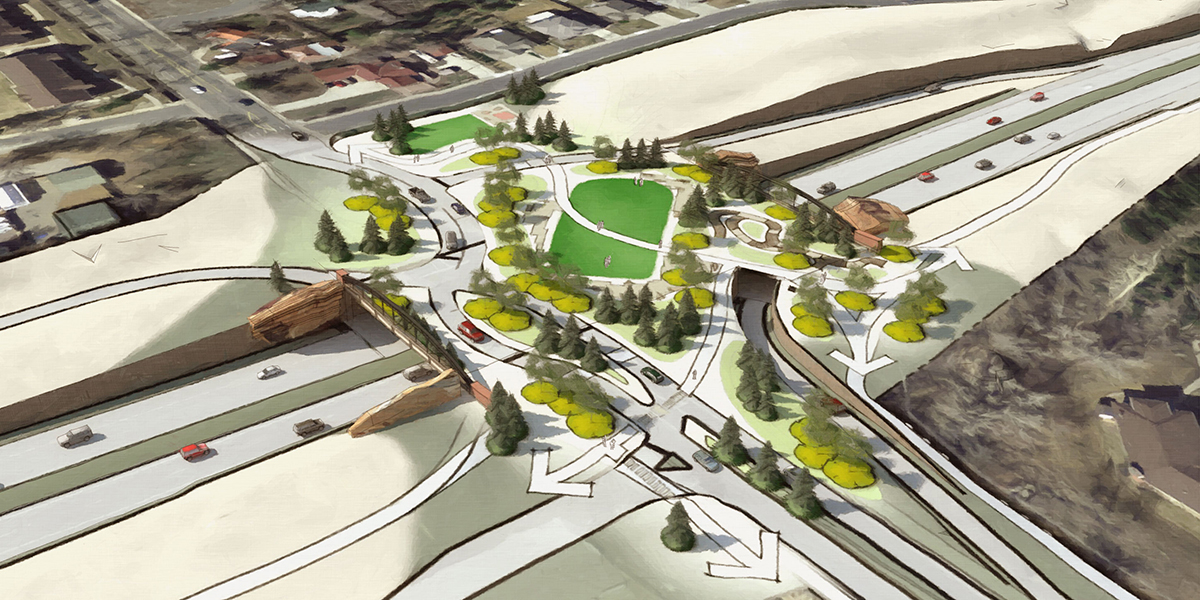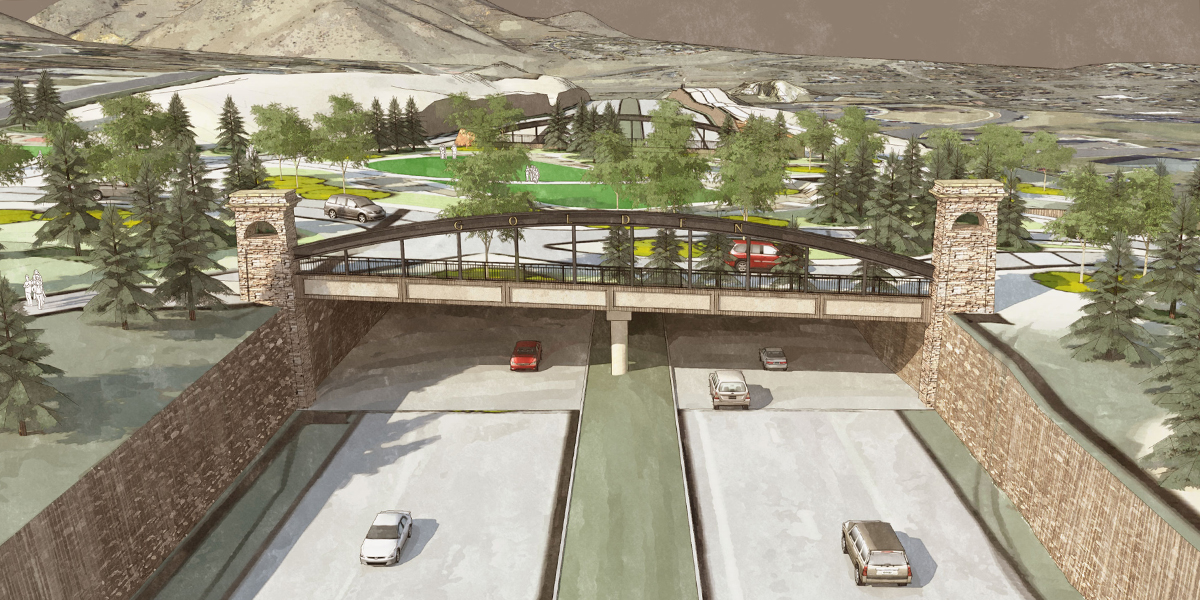A new park in Golden, Colorado, is actually a freeway overpass. But you’d never know it to look at it.
The American Council of Engineering Companies (ACEC) Grand Award—the “Academy Award” of the engineering industry–—recognizes preeminent engineering achievements from throughout the world. This project had previously won the ACEC Colorado top engineering prize. “I was surprised when we beat (many) projects…to take the top award in Colorado,” said Dan Hartman, Director of Public Works for the City of Golden. “But now to be chosen as one of the top 16 nationwide is remarkable. Testament to a great team.”
For years, planners had wanted to close a 102-mile multilane beltway loop around the Denver metropolis. But the City of Golden held out, fearing a freeway would cut the narrow valley that the community calls home in two. On one side would be Downtown Golden and the Colorado School of Mines, on the other student housing and the western neighborhoods. The highway would also cut off the hugely popular Lookout Mountain Road bike trek into the foothills from Central Golden.
So everyday 37,000 vehicles continued to cruise the highway at 55 miles an hour—and might suddenly have to stop for a red light at 19th Street. Bicyclists and pedestrians had to cross past 6 lanes of traffic with drivers revving their engines.
Rather than simply building a narrow vehicle and pedestrian bridge over a freeway, the MIG Denver office team, headed by Paul Kuhn, worked with a team of civil, structural and electrical engineers to visualize a football field size parkland “lid” over a U.S. 6 underpass. The “bridge” measures 120 feet by 280 feet and is complete with paved trails, picnic tables and benches, a shade structure, park space and a small sandstone boulder amphitheater. Plus a 120’ steel arch that acts as a gateway to Golden for vehicles on the highway.
“There’s some magic going on,” Kuhn says. Because it’s an overpass, weight is a concern. Wet dirt can get very heavy. “So we used ‘magic dirt’ that has volcanic aggregate. And the eight-foot tall berms flanking the park are filled with polystyrene to reduce weight and make the berms tall enough to mitigate noise from the highway below.”
Engineering firms included Muller Engineering Company (highway civil engineering), IMEG Corporation (city street civil engineering) and Loris and Associates (structural engineering).



